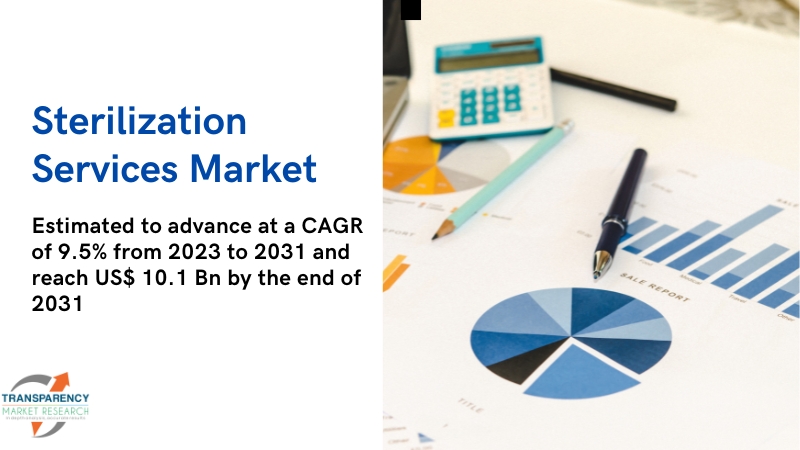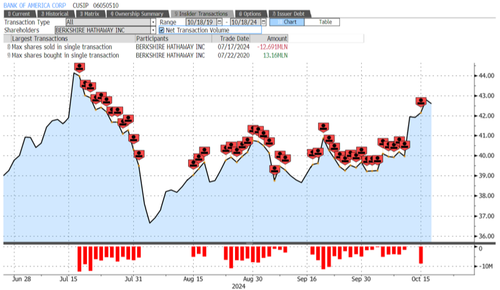
MicroStockHub Market Review: Balancing Act Notwithstanding the (seasonally affected) early-year bump in the long and winding road towards its long-run target level, measured inflation moderated in the second quarter to fall back in line with the broader trend observed over the past twelve months. Both core CPI and core PCE - the latter being the Federal Reserve's (Fed's) preferred measure of inflation in the U.S.
economy - fell on a year-over-year basis to levels not seen since 2021, clearly indicating some degree of success on the Fed's part after launching the most aggressive hiking cycle in decades. Indeed, the quarter closed with core PCE coming in at 2.6% annually, breaking through the 2.
8% year-end floor projected by the Fed at its June Federal Open Market Committee (FOMC) meeting. Despite this progress, Fed officials continued to push back on expectations by preaching patience, emphasizing data dependency, and cautioning against easing policy too soon, for fear of reigniting inflationary pressures. With this, the prospect of a potential rate hike gained traction in April and caused an early-quarter surge in U.
S. Treasury yields that was unable to be fully reversed by bond-friendly data releases in May and June, ultimately resulting in the 2-Year yield ( US2Y ) up 14 basis points (bps) over the period while the 10- ( US10Y ) and 30-Year ( US30Y ) increased 20 and 21 bps, respectively. Though inflation and the timing of rate cuts have drawn the most attention, the other side of the Fed's mandate, employment, has quietly weakened in the background.
Commonly referred to as "out of balance" by Fed Chair Jerome Powell throughout this cycle, the labor market has faded demonstrably in recent months with unemployment up over 50 bps from cycle lows to 4.0% and job openings, a key measure of labor demand, at the lowest level in three years. Further, wage gains - a hallmark of pandemic-related dislocations in labor markets as workers voluntarily left jobs for better pay - have slowed, with the voluntary quits rate falling along with it.
Such developments heighten the risks of monetary policy decisions; what was once a tighten-at-all-costs approach to combat inflation and restore balance to the labor market is now a much more nuanced proposition given the rise in unemployment with inflation not yet at target levels. Leveraged loan markets seemed largely unfazed by the potential downside en route to a 1.9% gain by the Morningstar LSTA Leveraged Loan Index ("Index') in the second quarter of 2024, bringing year-to-date total returns to 4.
4%. Given the sizeable rate backup in April and still-elevated level of Treasury yields, performance was once again driven almost entirely by interest return, which reflects the base rate (typically SOFR) and nominal coupon on the loan. Such attractive coupons were not lost on investors, with the leveraged loan asset class seeing over $5 billion of inflows during the quarter as demand for ETF and actively managed floating rate products remained robust, supported further by still-strong risk sentiment amid the ongoing soft landing market narrative.
These developments resulted in a tightening of spreads across both leveraged loans and CLOs while pushing the amount of loans trading above par to over 60% in May, which encouraged borrowers and arrangers to tap the market in hopes of reducing borrowing costs. This significant repricing wave shaved 7 to 10 bps from the average Index spread and made up nearly half of the quarter's primary issuance, which was supported by the strong technical backdrop of retail inflows and CLO issuance. With this tightening of loan spreads, reset activity also picked up in the CLO market for deals that were out of their reinvestment period as managers looked to reduce liability costs and protect the arbitrage.
In prior periods, broadly lower spreads across the loan market would prove supportive to CCC issues as CLO managers would likely reduce bond baskets and incorporate higher spread issues into deals to hit spread thresholds from prospective equity investors, though the recent uptick in liability management exercises (LMEs), distressed exchanges, and punitive recovery rates has weighed on this lower rated cohort's performance. As such, CCCs lagged with a gain of 1.2% for the quarter, while BB and B-rated issues advanced 1.
8% and 2.1%, respectively. From an industry perspective, the top performers were pharmaceuticals (+3.
1%) and household products (+2.8%), while telecommunications (-0.9%) and media (+0.
8%) were among the bottom performers. Performance Supported by sizeable interest returns, both the Metwest Floating Rate Income Fund I-Class ( MUTF: MWFLX , "Fund") and Morningstar/LSTA Leveraged Loan Index posted positive total returns in the second quarter of 2024, with the Fund's 2.22% gain (net of fees) outpacing the Index by 32 bps.
Relative outperformance for the period was driven by favorable issue selection within industrials, led by materials, commercial and professional services, telecommunications, and capital goods. Meanwhile, the bias towards more defensive segments of the market, including healthcare, food & beverage, and pharmaceuticals also benefitted relative returns from an allocation standpoint as these sectors were among the best performers over the quarter. Despite the sectoral emphasis on industries that typically characterize a more defensive posture, the Fund maintained targeted overweights to CCC and single-B rated issues, though with the composition of holdings in these cohorts varying from the Index given shorter average lives and expectations for positive take-out events in the coming months.
Careful underwriting across these issues resulted in one such take-out event occurring over the quarter, proving accretive to Fund returns and further supporting relative outperformance. Outlook & Positioning A turn of the calendar from June to July marks the two-year anniversary of the U.S.
Treasury yield curve's inversion and one year since the Fed last raised rates. And while some may argue that the avoidance of an immediate slowdown (i.e.
, negative GDP) in the face of such milestones indicates some newfound immunity to restrictive policy, mounting stress at the consumer and corporate level instead suggests that this time is likely no different, even if the total effects have yet to fully materialize. Recent delinquency data reveals that prime borrowers are beginning to suffer along with lower income consumers as the impacts of higher prices, higher rates, and tighter credit conditions take their toll. Meanwhile, many corporations have underperformed earnings expectations and reduced forward guidance, citing increased consumer frugality as one of the primary reasons.
After multiple quarters of companies passing higher prices through to end-users, it is becoming increasingly clear that pricing power is subsiding, leaving capex or headcount reductions the primary means to protect margins - all of which portend negative impulses to economic growth. For the more levered businesses, many have chosen to pursue a liability management exercise ('LME') where they will engage in an out-of-court restructuring of their debt obligations to raise liquidity and/or avoid a default. Given the minimal amount of debt reduction in LMEs compared to comprehensive restructurings, a significant cohort of the market that recently underwent these types of transactions will likely be susceptible to even a moderate slowdown.
Despite these prospective challenges faced by borrowers, investors in the leveraged loan asset class have continued to benefit from the current rate environment given elevated interest income and attractive all-in coupons. Healthy coupons and compelling yields do not, however, render disciplined credit analysis unimportant, especially given the propensity for loan base rates to fluctuate alongside the Fed Funds rate. And with the full impacts of the Fed's hiking cycle still working through the system, they are likely behind the curve as it relates to rate cuts, ultimately necessitating more swift action than what is currently priced in as they seek to shore up markets and inject liquidity into the system.
In such an environment, coupon clipping will bear less significance than capital preservation and emphasis on strong-performing issuers that can navigate challenging times. The TCW Bank Loan team therefore continues to target industries with significant recurring and replacement revenue in sectors such as technology, healthcare, and services. More recently, utilities have presented a compelling opportunity given surging demand related to data centers, onshoring manufacturing, and EV (electric vehicle) electrification.
The secular tailwinds in the space have provided robust forward earnings outlooks and underpinned significant asset coverage given the still high cost of replacement, both of which are likely to provide support for loan prices through commodity cycles. The team continues to shift away from consumer discretionary sectors, particularly those with large overseas manufacturing footprints that could be subject to increased tariffs, and from sectors with a higher market beta. Original Post Editor's Note: The summary bullets for this article were chosen by Seeking Alpha editors.
.














